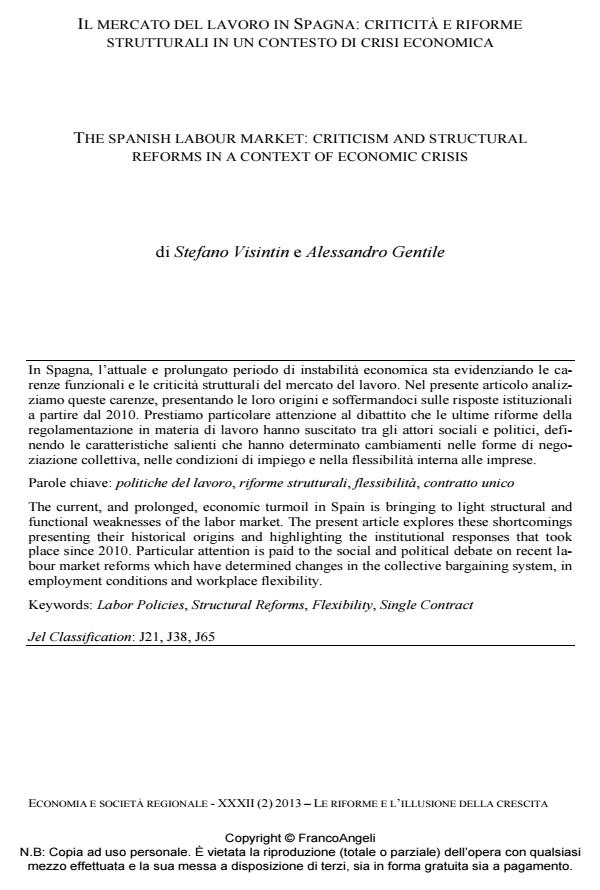The spanish labour market: criticism and structural reforms in a context of economic crisis
Journal title ECONOMIA E SOCIETÀ REGIONALE
Author/s Stefano Visintin, Alessandro Gentile
Publishing Year 2013 Issue 2013/2
Language Italian Pages 21 P. 65-85 File size 719 KB
DOI 10.3280/ES2013-002004
DOI is like a bar code for intellectual property: to have more infomation
click here
Below, you can see the article first page
If you want to buy this article in PDF format, you can do it, following the instructions to buy download credits

FrancoAngeli is member of Publishers International Linking Association, Inc (PILA), a not-for-profit association which run the CrossRef service enabling links to and from online scholarly content.
The current, and prolonged, economic turmoil in Spain is bringing to light structural and functional weaknesses of the labor market. The present article explores these shortcomings presenting their historical origins and highlighting the institutional responses that took place since 2010. Particular attention is paid to the social and political debate on recent labour market reforms which have determined changes in the collective bargaining system, in employment conditions and workplace flexibility.
Keywords: Labor Policies, Structural Reforms, Flexibility, Single Contract
Stefano Visintin, Alessandro Gentile, Il mercato del lavoro in spagna: criticità e riforme strutturali in un contesto di crisi economica in "ECONOMIA E SOCIETÀ REGIONALE " 2/2013, pp 65-85, DOI: 10.3280/ES2013-002004